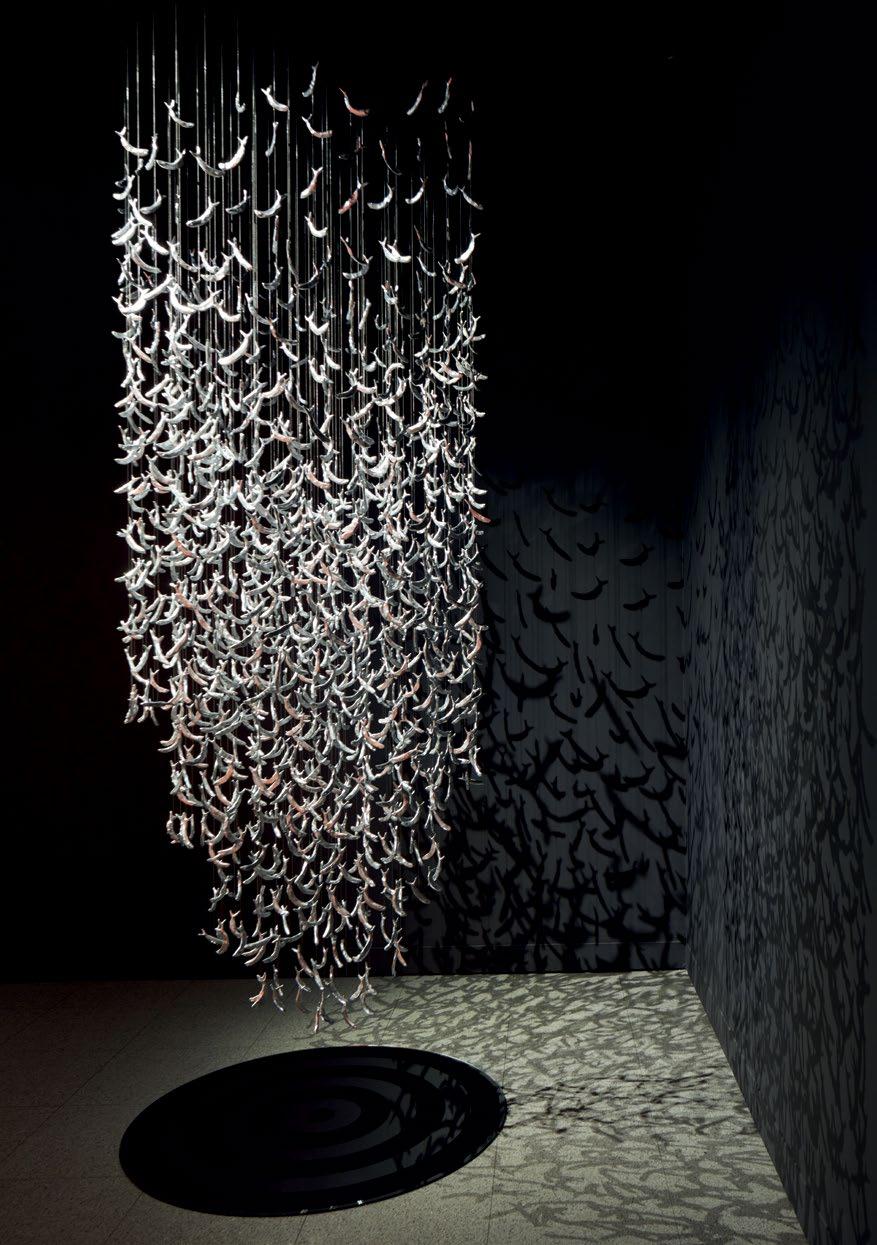
3 minute read
In the Company of 25 Writers: an introduction
Rachel Robertson
Mark Rothko famously said, ‘A picture lives by companionship, expanding and quickening in the eyes of the sensitive observer,’ before going on to note the riskiness of sharing art, for a picture ‘dies by the same token’. As writers, we understand both that risk and that companionship. With the publication of 25 for 25, we celebrate the expansion, pleasure, and enlivening inspiration that visual art offers us, as viewers and as creators.
Advertisement
There is a long tradition of ekphrastic writing, a term often used to describe the summoning through words of a visual scene or artwork. Traditionally, for writers, ekphrasis is an exchange between the seen and the written: the experience of a perceived visual object is transcribed into a written account, with special attention paid to the idea that the reader ‘re-experiences’ the original sensory encounter. The creative writing in this collection, however, is less focused on attempting to revive an original encounter. Instead, we use the artworks as a springboard or imaginative prompt, allowing ourselves to travel through time and space, memory and invention, to write a work that bounces from the visual art experience.
This book is the culmination of a three-year project, Writers Respond, in which I invited a range of writers, academics and students to visit an exhibition at the John Curtin Gallery, produce a work of creative writing, and then read their work at a public Gallery event. In this time, more than 40 staff (from Curtin and three other Western Australian universities) produced over 100 new poems, stories and essays, many of which have been published, while around 60 undergraduate and postgraduate students also created new works. We held eight public reading events, produced an anthology of responses to work by artist Lindy Lee (Where the Ink Falls) and a podcast series (Word and Image), presented three conference papers, and edited four special issue journal publications. Finally, we produced this anthology, which showcases 25 diverse works written by Curtin University staff and students in celebration of the 25th year anniversary of the John Curtin Gallery.
The essays, stories and poems here respond to seven different exhibitions held at the Gallery between 2021 and 2023 and take us from the southwest of Australia to Shanghai in the 1930s, from clouds seen by a plane-spotter to a cavity in the ceiling of the Gallery, from a weaving circle in Africa to memories of Ireland. Reflecting the diversity of authors, we share work by Indigenous and multi-cultural writers, bilingual poems, stories of exile and migration, and the work of young writers, exploring issues of identity and contemporary life.
The six sections contained within 25 for 25 reflect its key themes. The first section, First Nation Encounters, contains four works responding to art by Indigenous artists from two separate exhibitions, starting with the ‘whump whump whump of feet on wheat,’ a giant spider walking with ‘horse-rhythm across beige fields burdened with kernels’ (Lynch). This is followed by Strange Juxtapositions, responses to two major installation works with deep historical and cultural reach by Isaac Julien. In Regional Stories we return to writing inspired by Western Australian artists from the regions, works which, in their turn, initiated stories of Broome, Hong Kong and a river in Minnesota.
Imaginary Worlds contains work responding to an exhibition from Abdul-Rahman Abdullah, whose representation of realistic and fanciful animals, and oscillation between otherness and familiarity evoked wild imaginary worlds, ‘where your dream is my dream’ (Stevens).
In Eternity and Change, two works explore the timelessness, beauty and complexity of Lindy Lee’s artwork. And finally, Curious Threads contains stories and poems prompted by the 2021 Indian Ocean Craft Triennial, where unusual story threads connect, disperse and then re-connect across the globe.
These stories, essays and poems exist because of the imaginative openness of their authors, the inspiring artworks curated by the John Curtin Gallery, and the generous support of staff at the Gallery and within the School of Media, Creative Arts and Social Inquiry. These dialogues between artist and writer, image and word have been rewarding and productive to all involved.
As Caitlin Maling says in her poem here, ‘There are always more ways to see a thing,’ and this anthology demonstrates both the truth of this and the value of it. We offer our words as an act of gratitude for the art we have experienced and an act of companionship with the artists, with viewers, with each other and, most of all, with readers. To adapt Rothko’s sentiment slightly, we can surely say that writing, too, ‘lives by companionship, expanding and quickening in the eyes of the sensitive’ reader.
Rachel Robertson








